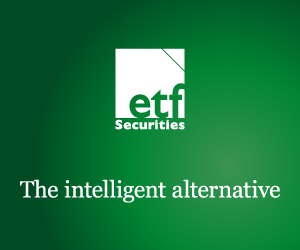Financial markets have been roiled by President Trump’s tariff policies, leading to sharp volatility across asset classes. US equities have taken the brunt of it, with the S&P 500 down as much as 20% from its January highs. Bond markets are also unstable, reflecting shifting expectations around 2025 interest rates.
This wave of macroeconomic uncertainty has made it harder to detect underlying investment trends—especially in crypto. Despite its independence from direct government influence, digital assets haven’t been immune to the turbulence. But while volatility has hit traditional markets hard, crypto has once again shown resilience, underpinned by improving fundamentals and a strengthening regulatory backdrop.
What we’ve learned since November
In the wake of President Trump’s election in November, digital assets were hitting all-time highs. But instead of urging investors to chase returns, we warned against getting swept away by the “FOMO” mindset that often happens with investors in this asset class. Our message was simple: stick to your target allocation and avoid overexposure after sharp price increases. This approach is designed to help investors benefit from crypto’s long-term asymmetric potential without succumbing to emotional swings.
Even before the election the Nasdaq Crypto Index™ (NCI™) had already risen nearly 50% for the year (as of October 31, 2024). Trump’s win added fuel to the fire, boosting optimism that US crypto regulation could finally turn a corner. By year-end, the NCI™ had more than doubled, closing with a 105% gain.
That bullish momentum continued into early 2025, driven by post-halving optimism, improving adoption metrics, and the tailwinds of Trump’s return. However, the tariff shock has since erased much of crypto’s post-election gains, reigniting questions about the asset class’s staying power in a chaotic macro environment. While further corrections are possible, we believe this phase represents another one of those important long-term entry points—just as we’ve seen before.
Why fundamentals still matter
It’s important to keep in mind that crypto’s value and price trajectory isn’t driven solely by macro noise. Several key forces are still working in its favor:
• Bitcoin’s 2024 halving has constrained supply, historically a key catalyst for price appreciation.
• Easing US monetary policy has provided a tailwind to risk assets across the board.
• Institutional adoption continues to grow, with more asset managers, banks, and platforms embracing digital assets in portfolios.
But perhaps the most underappreciated catalyst right now is regulatory clarity in the US. The stance toward the industry has shifted significantly. After years of mixed messages and an enforcement-first approach to regulation, US policymakers are now working toward a more coherent and constructive framework for digital assets. For example:
• There’s real momentum in Congress to pass bipartisan legislation around custody, stablecoins, and crypto exchange-traded products (ETPs)—all of which could serve as gateways for broader institutional participation.
• Regulators are seeking input from the industry, recognizing the need for practical and innovation-friendly rules.
• This policy shift isn’t just eliminating noise—it’s a structural tailwind that could accelerate adoption, investment flows, and long-term utility for digital assets.
Even amid the recent pullback, the NCI™ remains up 7.0% since Trump’s election—outperforming most risk assets and second only to gold, which is up 8.7%. In contrast, the broader “Trump rally” has fizzled in traditional markets: the S&P 500 and Nasdaq-100 are both down more than 10% over the same period, weighed down by tariff fears and growth uncertainty.
That divergence highlights a key point: while crypto remains exposed to global macro risks, its relative strength continues to stand out. And as the regulatory and adoption picture improves, the case for long-term crypto allocations is only growing stronger.
Looking ahead: stay disciplined, think long term
With tariffs reshaping global trade and pushing the world toward a more fragmented economic order, crypto’s borderless, decentralized, and politically neutral nature becomes increasingly relevant. It offers a hedge not only against inflation and currency debasement but also against geopolitical dislocation and systemic risk.
The excitement of late 2024 wasn’t a one-off, and neither is the current wave of fear. Crypto’s long-term role in portfolios remains intact. The temptation to react emotionally—whether by chasing peaks or fleeing during corrections—is strong. But discipline, not emotion, is what wins over time.
With regulatory clarity gaining ground and adoption continuing to advance, we believe digital assets are on solid footing—ready not only to weather the current volatility but to emerge stronger as new regulatory clarity, institutional adoption, and use cases unfold in 2025.
This material expresses Hashdex AG and its subsidiaries and affiliates (“Hashdex”)’s opinion for informational purposes only and does not consider the investment objectives, financial situation or individual needs of one or a particular group of investors. We recommend consulting specialized professionals for investment decisions. Investors are advised to carefully read the prospectus or regulations before investing their funds. The information and conclusions contained in this material may be changed at any time, without prior notice. Nothing contained herein constitutes an offer, solicitation or recommendation regarding any investment management product or service. This information is not directed at or intended for distribution to or use by any person or entity located in any jurisdiction where such distribution, publication, availability or use would be contrary to applicable law or regulation or which would subject Hashdex to any registration or licensing requirements within such jurisdiction. No part of this material may be (i) copied, photocopied or duplicated in any form by any means or (ii) redistributed without the prior written consent of Hashdex. By receiving or reviewing this material, you agree that this material is confidential intellectual property of Hashdex and that you will not directly or indirectly copy, modify, recast, publish or redistribute this material and the information therein, in whole or in part, or otherwise make any commercial use of this material without Hashdex’s prior written consent.
Investment in any investment vehicle and cryptoassets is highly speculative and is not intended as a complete investment program. It is designed only for sophisticated persons who can bear the economic risk of the loss of their entire investment and who have limited need for liquidity in their investment. There can be no assurance that the investment vehicles will achieve its investment objective or return any capital. No guarantee or representation is made that Hashdex’s investment strategy, including, without limitation, its business and investment objectives, diversification strategies or risk monitoring goals, will be successful, and investment results may vary substantially over time. Nothing herein is intended to imply that the Hashdex s investment methodology or that investing any of the protocols or tokens listed in the Information may be considered “conservative,” “safe,” “risk free,” or “risk averse.”
Certain information contained herein (including financial information) has been obtained from published and non-published sources. Such information has not been independently verified by Hashdex, and Hashdex does not assume responsibility for the accuracy of such information. Hashdex does not provide tax, accounting or legal advice. Certain information contained herein constitutes forward-looking statements, which can be identified by the use of terms such as “may,” “will,” “should,” “expect,” “anticipate,” “project,” “estimate,” “intend,” “continue” “believe” (or the negatives thereof) or other variations thereof. Due to various risks and uncertainties, including those discussed above, actual events or results, the ultimate business or activities of Hashdex and its investment vehicles or the actual performance of Hashdex, its investment vehicles, or digital tokens may differ materially from those reflected or contemplated in such forward-looking statements. As a result, investors should not rely on such forward- looking statements in making their investment decisions. None of the information contained herein has been filed with the U.S. Securities and Exchange Commission or any other governmental or self-regulatory authority. No governmental authority has opined on the merits of Hashdex’s investment vehicles or the adequacy of the information contained herein.
This document qualifies as advertisement within the meaning of article 68 of the Swiss Financial Services Act and/or article 95 of the Swiss Financial Services Ordinance and is not a prospectus, basic information sheet (BIB) or a key information document (KID). Any prospectus (in connection with an offer to the public or admission to trading) and/or any BIB or KID (for a product which was meant to be offered to retail clients), in each case if applicable and/or available, of financial instruments described in herein, from the date of its publication (which may be before, on or after the date of this document) and subject to applicable securities laws, is available from Hashdex AG.
Nasdaq®, Nasdaq Crypto Index™, NCI™, Nasdaq Crypto Index Europe™ and NCIE™ are registered trademarks of Nasdaq, Inc. (which with its affiliates is referred to as the “Corporations”) and are licensed for use by Hashdex Asset Management Ltd. The Hashdex Nasdaq Crypto Index ETF and Hashdex Nasdaq Crypto Index Europe ETP (the “Products”) have not been passed on by the Corporations as to their legality or suitability. The Products are not issued, endorsed, sold, or promoted by the Corporations.THE CORPORATIONS MAKE NO WARRANTIES AND BEAR NO LIABILITY WITH RESPECT TO THE PRODUCTS.<

 Nyheter4 veckor sedan
Nyheter4 veckor sedan
 Nyheter3 veckor sedan
Nyheter3 veckor sedan
 Nyheter4 veckor sedan
Nyheter4 veckor sedan
 Nyheter3 veckor sedan
Nyheter3 veckor sedan
 Nyheter3 veckor sedan
Nyheter3 veckor sedan
 Nyheter2 veckor sedan
Nyheter2 veckor sedan
 Nyheter3 veckor sedan
Nyheter3 veckor sedan
 Nyheter2 veckor sedan
Nyheter2 veckor sedan






















